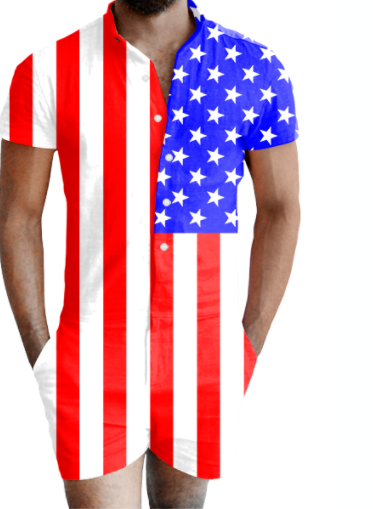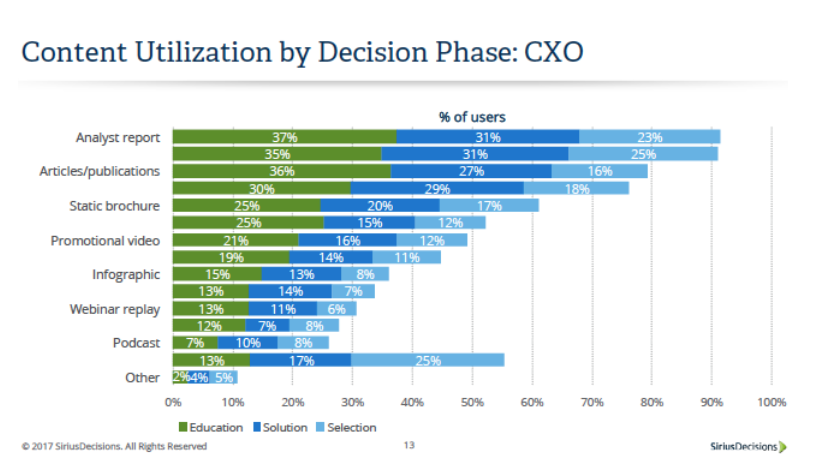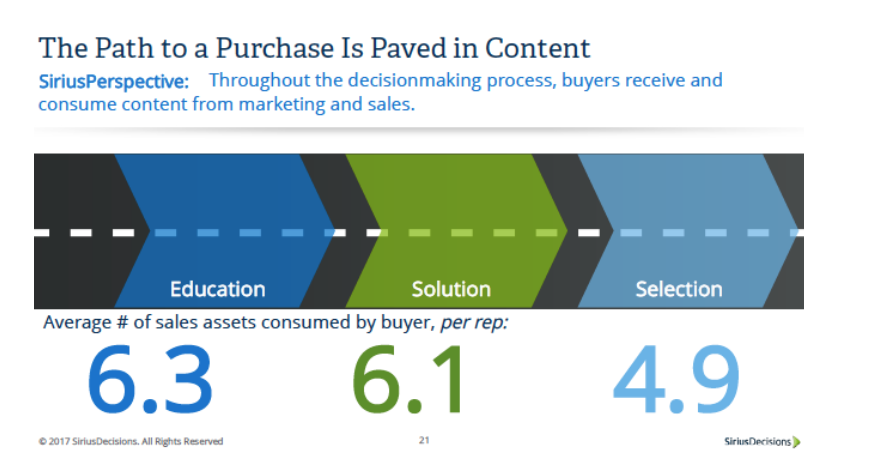Ask a Content Strategist
Ask a Content Strategist: How Do You Use Articles to Influence B2B Leads?
Welcome to a special Fourth of July edition of Ask a Content Strategist, where I finally answer the question: What’s the ROI of wearing an American Flag romper all weekend in the Hamptons?

Sorry, I’m getting word from my team that’s not what we’re doing with this column, and that if I really want to write 1,000 words on patriotic rompers, I should just suck it up and take that $20,000 per year editorial assistant job at GQ.
Instead, in the spirit of Contently’s accountable content series, let’s talk about something much more practical: how to use B2B content to drive leads. And instead of answering a series of reader questions like usual, I’m going to share an exchange I had over email with one of my good friends, who recently took over a B2B content operation. I’ve lightly edited our exchange.
So, how do you—or others—use article content to influence leads in the B2B process?
—Joe’s Friend, New York
First off, it’s critical to have fleshed out buyer personas so that you understand the audience you’re going to reach. You’re marketing team should already have these. If not, get working on it! You can’t start planning a content strategy without understanding the audience you’re serving.
Then, leverage content analysis tools (something we can help you with) and persona interviews to figure out which types of content will be most useful to those personas at each stage of the funnel. The top of the funnel might require articles, videos, and research papers. The middle of the funnel may include calculators, tools, and case studies. And the bottom-of-the-funnel will need product videos, product information, sales decks, and other content that’ll help your buyer get approval for the purchase internally.
A lot of short-sighted marketers don’t see how top-of-funnel content like articles and videos drive leads. But your funnel is going to be pretty damn empty if you don’t have enticing content to capture your audience’s attention and start convincing them that you’re the right solution.
Obviously, this all breaks down if your personas aren’t fleshed out. At Contently, we actually just finished refreshing our personas. (Shoutout to our content strategist Caerley Hill for leading the charge!) This slide from analyst firm Sirius Decisions provides a solid framework for what your personas should include.

Things like initiatives, content preferences, and decision drivers are often overlooked, but it’s really important to understand them if you want to create content that drives business results.
I know blog articles are often used as lead nurturing similar to the way we do with B2C—like an e-newsletter. But is it ever used as acquisition tool, and if so how do you get it in front of the right audience?
Articles can absolutely be the first touchpoint with a prospect. After all, that’s the whole idea of top-of-funnel content.
On the organic side, the goal is to create content that’s discoverable via SEO and social. It should be optimized towards the target keywords your buyers are searching for, and compelling enough to earn backlinks (boosting SEO) and shares (reaching new folks for free). Shares are often overlooked in B2B marketing, but they’re crucial. If the right people are sharing your content, the network effect will allow you to reach hundreds or thousands of similar buyers for free.
On the paid side, it’s a golden age for B2B content distribution. Facebook targeting has gotten incredibly granular (job title, company, income, lookalikes based on your customer base, etc.) and is still very cost-effective. LinkedIn is more expensive, but delivers content in an environment where folks are looking for work-related content. Outbrain also recently introduced a lot of advanced targeting options that mirror Facebook’s offerings, including look-a-like audiences.
You can also distribute content via paid search (expensive, but worth it in some cases) and other partnership programs, like when we partner with Hubspot to create and co-promote a joint webinar. The key here is finding a partner with a similar audience so you’re reaching the right persona. (Sensing a theme?)
If someone consumes said article content as a first touchpoint, what happens next? Unless we’ve bought a list, we don’t have any contact info for said person. So is retargeting based on their cookie information the only possible next step? Or is there something else?
If you’re retargeting, what would you follow up with? More article content, video, or visual content for where they are in the journey leading up to a “premium content” moment (webinar, ebook, event) which is gated?
Right on again: it’s cookie-based retargeting until you get them to opt-in to a relationship with you.
The most common stream is: They read an article, you retarget with an e-book offer, they download the e-book, then you retarget them with more product-oriented ads (demo requests, free trials, check out our solution, etc.), while also nurturing them via email now that you have their email address. You can use marketing automation software to stop serving ads to them at this point, particularly if they’re responding to your emails, have talked to a sales person, etc.
There’s also an argument to be made for retargeting them with more content to deepen the relationship. I think this is a valid strategy, but if you’re going to do it, you want to hit them with mid-funnel content (case studies, ROI calculators, etc.), not more top-of-funnel content.
It really depends on the product you’re selling and your sales cycle. Is this an expensive enterprise solution with 9-month sales cycles, or a $50/month offering that’s a much easier close?
Does article content get scored lower than other kinds of content in lead scoring? Why or why not? (This one feels like an essay question.)
Looks like you’re conflating lead scoring with lead attribution, which is a common mistake. Lead scoring is when you score the lead based on their profile. For us, a director-or-above marketer from a Fortune 500 finance company is an A lead, while the marketing manager at a small CPG startup is a D lead, since the customers who get the most out of Contently are enterprise finance and B2B companies.
Lead attribution is when you assign credit for a lead to a piece of content or marketing program. At that point, it just relies on your model, but articles usually don’t get dinged as lower. This is a pretty simplistic explanation of one way to think about multi-touch attribution.
Who owns the decisions on the previous two questions at most companies? It doesn’t seem like it should be me—it seems like it should be data-backed traditional marketing, but just want to confirm my gut.
This is usually owned by the demand gen or “revenue marketing” team. Just make sure they know what they’re doing, and that your teams are as aligned as possible.
How do I convince the relevant stakeholders that article content has value in the process?
I think there’s a lot of research that backs up the value of top-of-funnel content like articles; Sirius Decisions, for instance, has found that articles are the third-most impactful type of content for B2B C-suite buyers, and make an impact at all three stages of the funnel.

And the average buyer consumes over 17 pieces of content before they make a purchase:

It’s universally accepted that B2B buyers do a ton of research before they ever fill out a form or get in touch with you. And if you’re not present in the research phase to influence their decision, you are totally screwed. So how do you avoid being totally screwed? Articles that get shared a bunch and rank highly on key search terms and perform well in top-of-funnel paid campaigns.
You’ve said you think B2B marketers gate too much stuff. But at some point you have to gate something to get the lead. So can you explain what you mean?
What I’m arguing for is opt-ins. Give people an awesome 2,000 word e-book ungated, but then have offers (trials, demos, events, webinars, etc) that show up as ads mid-stream in the content.
To be clear, I do think that webinars should be gated. You want to send reminders and follow-ups. They’re more like an event.
As for what’s good enough to be gated, it’s important to ask whether you’re offering a fair value exchange. Is this e-book so good that it’s worth it for someone to give up their email address and opt-in to being potentially contacted by your company?
It’s also worth considering the trade-off. Let’s say that a piece of content would get 1,000 readers ungated. If you gate it, maybe only 250 people will download it. Assuming you email the report to them, maybe 30 percent of those 250 will actually end up reading it. So then it becomes a question of having 1,000 people read something versus 80, and whether those 250 email addresses are worth the readers you lose.
Ultimately, you have to pick and choose your spots. Gating is a very effective lead gen technique, but you need to use it only when it’s appropriate. If you’re unsure, always lean in the direction of providing value to your audience.
Joe Lazauskas is Contently’s director of content strategy and editor-in-chief of The Content Strategist. Ask him your most pressing content strategy questions here for a chance to be included in his next mailbag, or email him at lazer@contently.com.
Get better at your job right now.
Read our monthly newsletter to master content marketing. It’s made for marketers, creators, and everyone in between.




